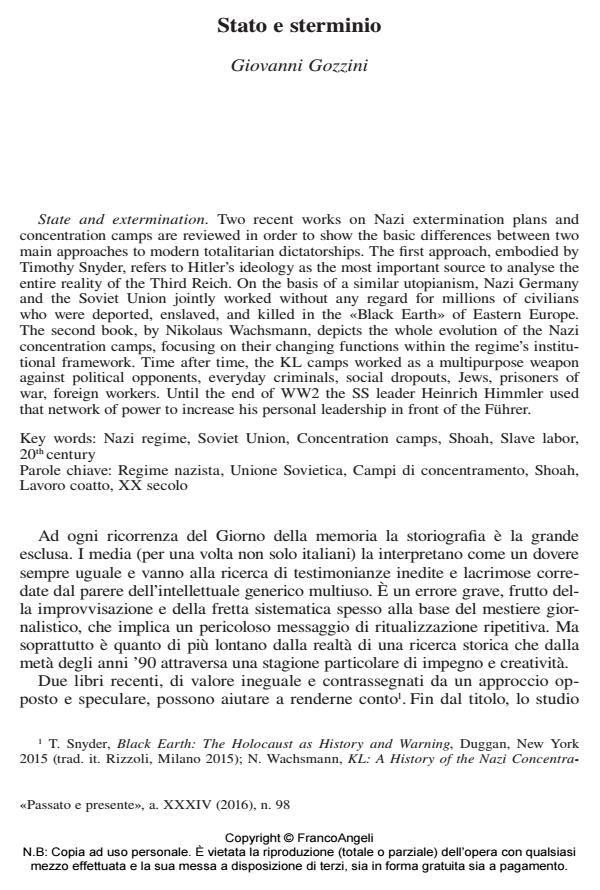Recensioni
Titolo Rivista PASSATO E PRESENTE
Autori/Curatori Giovanni Gozzini, Alessandra Pescarolo
Anno di pubblicazione 2016 Fascicolo 2016/98 Lingua Italiano
Numero pagine 23 P. 151-173 Dimensione file 158 KB
DOI 10.3280/PASS2016-098008
Il DOI è il codice a barre della proprietà intellettuale: per saperne di più
clicca qui
Qui sotto puoi vedere in anteprima la prima pagina di questo articolo.
Se questo articolo ti interessa, lo puoi acquistare (e scaricare in formato pdf) seguendo le facili indicazioni per acquistare il download credit. Acquista Download Credits per scaricare questo Articolo in formato PDF

FrancoAngeli è membro della Publishers International Linking Association, Inc (PILA)associazione indipendente e non profit per facilitare (attraverso i servizi tecnologici implementati da CrossRef.org) l’accesso degli studiosi ai contenuti digitali nelle pubblicazioni professionali e scientifiche
State and extermination: Two recent works on Nazi extermination plans and concentration camps are reviewed in order to show the basic differences between two main approaches to modern totalitarian dictatorships. The first approach, embodied by Timothy Snyder, refers to Hitler’s ideology as the most important source to analyse the entire reality of the Third Reich. On the basis of a similar utopianism, Nazi Germany and the Soviet Union jointly worked without any regard for millions of civilians who were deported, enslaved, and killed in the «Black Earth» of Eastern Europe. The second book, by Nikolaus Wachsmann, depicts the whole evolution of the Nazi concentration camps, focusing on their changing functions within the regime’s institutional framework. Time after time, the KL camps worked as a multipurpose weapon against political opponents, everyday criminals, social dropouts, Jews, prisoners of war, foreign workers. Until the end of WW2 the SS leader Heinrich Himmler used that network of power to increase his personal leadership in front of the Führer.
Political myths and gender ideologies: The mondine in the 20th century: The image of the so-called mondine, women working hard in the paddy fields, compelled to migrate far from their families, was incompatible with the 20th-century middleclass vision of a fragile female identity. As Barbara Imbergamo’s book shows, political myths, gender ideologies, and welfare policies were built by social and political institutions in different seasons to face the peculiarities of these figures and make them coherent with the underlying cultural frameworks.;
Keywords:Regime nazista, Unione Sovietica, Campi di concentramento, Shoah, Lavoro coatto, XX secolo, Lavoro, Genere, Ideologie, Diritti, Welfare, Risaie
Giovanni Gozzini, Alessandra Pescarolo, Recensioni in "PASSATO E PRESENTE" 98/2016, pp 151-173, DOI: 10.3280/PASS2016-098008